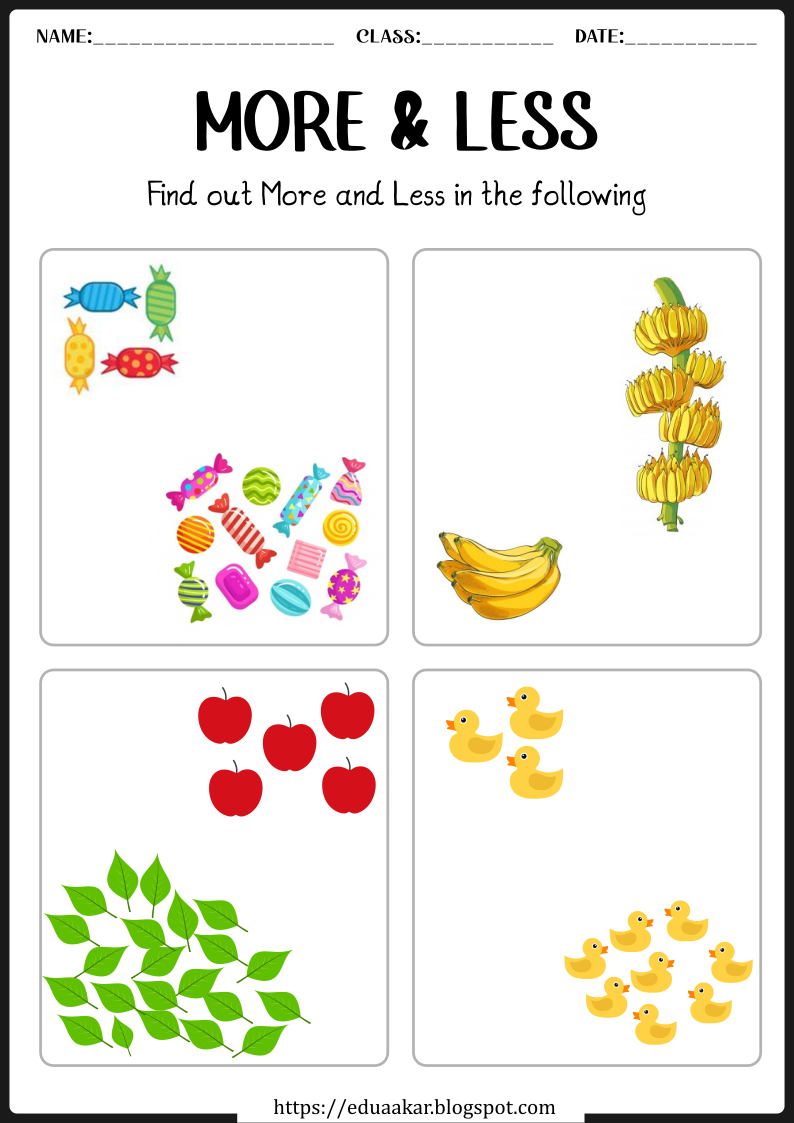Free More and Less Worksheets to Download
Kids love seeing objects they recognize, so we’ve included everyday items like toys, snacks, and pencils in this worksheet. Children will count and compare different groups of objects, then circle or color the one with more or fewer items. This hands-on counting activity helps them naturally understand quantities in a way they find meaningful.Why "More and Less" is an Important Pre-Math Skill
Learning to identify “More” and “Less” is essential for kids because it lays the foundation for later math concepts like addition and subtraction. Think of it as pre-math preparation! When children understand how to compare quantities, they’re not only getting a head start in math but also learning important cognitive skills like problem-solving and logical thinking. These simple worksheets can be a great first step in building those skills early on.
Tips for Using These Worksheets at Home or in the Classroom
Here are some tips to make these More and Less worksheets even more effective and enjoyable:
- Make It Fun: Try turning the worksheets into a game! For example, ask them, “Can you find the one that has MORE apples?” or “Which one has LESS bananas?” Use an excited tone to make it sound like a fun challenge.
- Encourage Hands-On Learning: Why not use real-life objects? You can take toys, coins, or even snacks and practice comparing quantities. For instance, “Who has more crackers, you or your friend?” This real-world application helps kids make connections between the worksheet activities and the world around them.
- Consistency is Key: You don’t need to wait for “math time” to reinforce this concept. Try incorporating it into everyday activities, like at snack time or while sorting toys. “Oh, you have more building blocks than I do!”
Learning "Big and Small" with My Students
I remember introducing “Big and Small” to a group of preschoolers a few years back. They were fascinated! We started with everyday objects around us – like their favorite toys. Eventually, I introduced “More and Less,” using snacks they could count and compare (always a favorite). Once they grasped the difference between big and small, they found “More” and “Less” to be the next natural step. It’s always fun to see that “lightbulb moment” when a child gets a new concept!
Frequently Asked Questions (FAQs)
Here are answers to a few questions that often come up with parents and teachers:
- What age is suitable for these worksheets?
These worksheets are designed for preschoolers (ages 3-5) and kindergartners, though you can adjust them to match your child’s unique pace.
- How can I download the worksheets
Just click on the images to download, or look for the PDF links provided for each worksheet. - What should I do if my child struggles with the concept?
Keep it light and fun! Sometimes, using real objects instead of worksheets can help. Take breaks and come back to it later if needed.
Conclusion: Making Early Math Fun and Interactive
With these More and Less worksheets, kids can enjoy learning math without feeling overwhelmed. By making it interactive and relatable, you’re helping them build a solid foundation for future math skills, all while having fun. Download these free worksheets and watch your little ones grow in confidence and curiosity as they explore the world of numbers.





